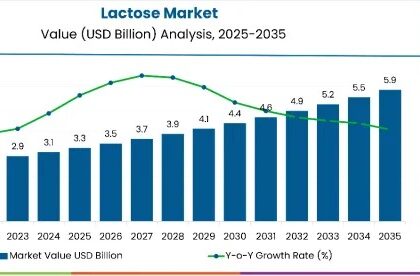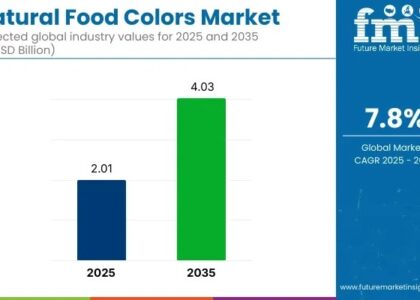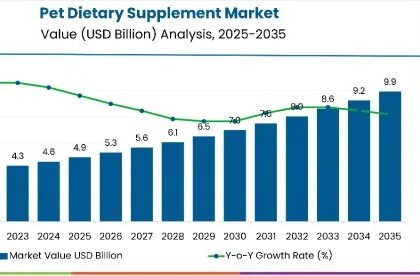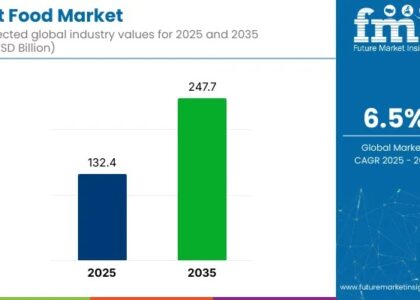The interlock vials market is poised for significant growth opportunities in the coming years, driven by several key factors and evolving trends. As the market is expected to register a CAGR of 5.3%, reaching a valuation of US$ 12.5 Billion by 2032, manufacturers are presented with compelling prospects to capitalize on.
One prominent growth opportunity lies in the expanding application of interlock vials across various industries, particularly in the healthcare and pharmaceutical sectors. The design properties of interlock vials enable convenient storage and retrieval systems, making them an ideal choice for pharmaceutical companies to deliver products efficiently.
Moreover, laboratories increasingly rely on interlock vials for sampling applications due to minimal sample loss and maximum extraction capabilities, fostering sustained demand in this segment. The micro-volume inserts designed for specific volume capacities further enhance the versatility and utility of interlock vials, particularly in chromatography and sample storage in pathology.
Looking ahead, the future growth of the interlock vials market hinges on continued innovation in materials and design, catering to the evolving needs of end-users. Manufacturers have an opportunity to focus on developing solutions that offer enhanced chemical resistance, improved efficiency in assembly, and easy retrieval of contents, thereby addressing the demands of medical research and other key segments. As the healthcare and pharmaceutical sectors continue to expand globally, the demand for interlock vials is expected to follow suit, presenting manufacturers with lucrative avenues for growth and expansion.
Request a Report Sample: https://www.futuremarketinsights.com/reports/sample/rep-gb-10371
Amid increasing global concerns about plastic waste, interlock vials made from clear glass materials are witnessing escalating demand. Additionally, the impracticality of using metals has further bolstered the sales of interlock vials, as they provide an economical and inert solution for containing liquids. As industries seek sustainable alternatives, the market for clear glass interlock vials continues to expand, driven by the need for both effective containment and eco-friendly materials.
Trending Opportunities:
- Digitalization of Track and Trace: The integration of digital technologies for enhanced track-and-trace capabilities presents a trending opportunity in the interlock vials market. Implementing digital solutions, such as blockchain or advanced tracking systems, can improve supply chain visibility and product authentication.
- Innovative Materials and Lightweight Designs: There is a growing opportunity for innovation in materials used for interlock vials, including the exploration of lightweight yet durable materials. Manufacturers can capitalize on this trend by developing vials that offer both strength and reduced environmental impact.
- Flexible Packaging Solutions: The trend towards flexible packaging is creating opportunities in the interlock vials market. Offering vials with flexible and adaptable features, such as collapsible or squeezable designs, can cater to the evolving needs of pharmaceutical companies seeking more versatile packaging options.
- Collaborations for Sustainable Initiatives: Collaborations between interlock vial manufacturers and pharmaceutical companies for sustainable packaging initiatives are on the rise. Opportunities lie in developing eco-friendly packaging solutions, incorporating recycled materials, and implementing circular economy principles to address environmental concerns.
- Application in Biotechnology and Personalized Medicine: The increasing focus on biotechnology and personalized medicine opens doors for interlock vial manufacturers to create specialized solutions. Opportunities exist in developing vials tailored for the unique requirements of biopharmaceuticals, gene therapies, and personalized medicine formulations.
Request For Customization: https://www.futuremarketinsights.com/customization-available/rep-gb-10371
Growth Drivers:
- Increasing Demand for Biopharmaceuticals: The growing demand for biopharmaceutical products, including vaccines, monoclonal antibodies, and gene therapies, is a significant driver for the interlock vials market. These vials are essential for secure storage and transportation of sensitive biological drugs.
- Advancements in Drug Development: Ongoing advancements in drug development, particularly in the field of personalized medicine and targeted therapies, are fueling the demand for specialized vials. Interlock vials offer enhanced protection against contamination and ensure the stability of advanced pharmaceutical formulations.
- Stringent Regulatory Standards: The pharmaceutical industry’s adherence to stringent regulatory standards for drug safety and quality is driving the adoption of high-quality packaging solutions. Interlock vials, designed to meet regulatory requirements, are gaining preference for their ability to maintain product integrity.
- Rise in Chronic Diseases: The increasing prevalence of chronic diseases worldwide, such as diabetes and cancer, is contributing to the expansion of the pharmaceutical industry. As a result, there is a growing need for reliable and secure packaging solutions like interlock vials to ensure the efficacy of drugs used in chronic disease management.
- Globalization of Pharmaceutical Supply Chains: The globalization of pharmaceutical supply chains is creating a demand for packaging solutions that can withstand the complexities of international transportation. Interlock vials, with their robust design and secure closures, are well-suited for ensuring product safety and integrity throughout the global supply chain.
Industry Trends:
- Focus on Sustainable Packaging: There is a rising trend in the pharmaceutical industry towards sustainable and eco-friendly packaging solutions. Manufacturers in the interlock vials market are increasingly exploring materials and designs that reduce environmental impact while maintaining the required product protection standards.
- Integration of Smart Packaging Technologies: The integration of smart packaging technologies, such as RFID tags and sensors, is gaining traction in the interlock vials market. These technologies enable real-time monitoring of factors like temperature and humidity, ensuring the quality and safety of pharmaceutical products during storage and transportation.
- Customization and Personalization: The trend towards personalized medicine is influencing the demand for customized packaging solutions. Interlock vial manufacturers are offering customizable options in terms of size, material, and closure systems to meet the specific needs of pharmaceutical companies and their unique drug formulations.
- Rapid Adoption of Ready-to-Use Vials: Ready-to-use interlock vials, pre-sterilized and ready for filling, are becoming increasingly popular in the pharmaceutical manufacturing process. This trend is driven by the need for efficiency, reduced contamination risks, and streamlined production processes.
- Emphasis on Quality Assurance and Traceability: Quality assurance and traceability are critical factors in the pharmaceutical industry. Interlock vial manufacturers are incorporating features such as unique identification codes and tamper-evident closures to enhance traceability and ensure the authenticity of pharmaceutical products, addressing concerns related to counterfeiting and product integrity.
Request Report Methodology: https://www.futuremarketinsights.com/request-report-methodology/rep-gb-10371
Key Segments:
By Insert Type:
- Shell Style Inserts
- Glass Inserts with Bottom Springs
- Glass Inserts with Top Springs
By Material Type:
- Borosilicate Glass
- Type 1 Glass
By Cap Type:
- Screw Top Interlock Vials
- Crimp Top Interlock Vials
By Region:
- North America
- Latin America
- Asia Pacific
- Middle East and Africa
- Europe
Author:
Ismail Sutaria (Lead Consultant, Packaging and Materials) has over 8 years of experience in market research and consulting in the packaging & materials industry. Ismail’s strength lies in identifying key challenges faced by the client and offering logical and actionable insights to equip the clients with strategic decision-making power.
Ismail has been an instrumental part of several transformational consulting assignments. His key skills include competitive benchmarking, opportunity assessment, macroeconomic analysis, and business transformation advisory. Ismail is an MBA holder in Marketing and has a Bachelor’s Degree in Mathematics.
About Future Market Insights (FMI)
Future Market Insights, Inc. (ESOMAR certified, recipient of the Stevie Award, and a member of the Greater New York Chamber of Commerce) offers profound insights into the driving factors that are boosting demand in the market. FMI stands as the leading global provider of market intelligence, advisory services, consulting, and events for the Packaging, Food and Beverage, Consumer Technology, Healthcare, Industrial, and Chemicals markets. With a vast team of over 5000 analysts worldwide, FMI provides global, regional, and local expertise on diverse domains and industry trends across more than 110 countries.
Contact Us:
Future Market Insights Inc.
Christiana Corporate, 200 Continental Drive,
Suite 401, Newark, Delaware – 19713, USA
T: +1-845-579-5705
For Sales Enquiries: sales@futuremarketinsights.com
Website: https://www.futuremarketinsights.com
LinkedIn| Twitter| Blogs | YouTube





